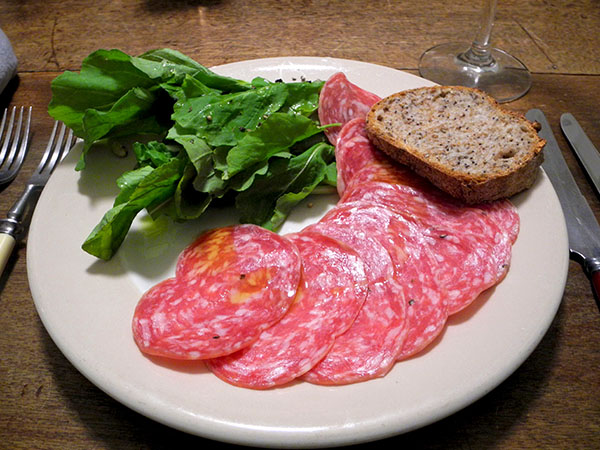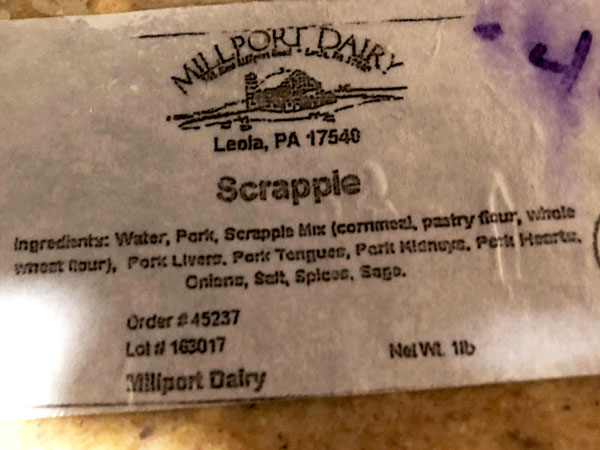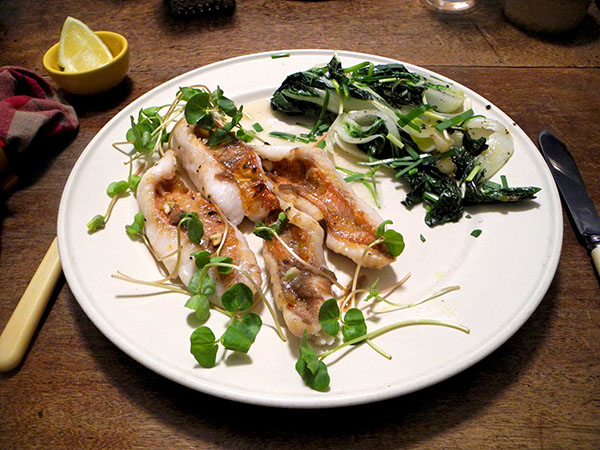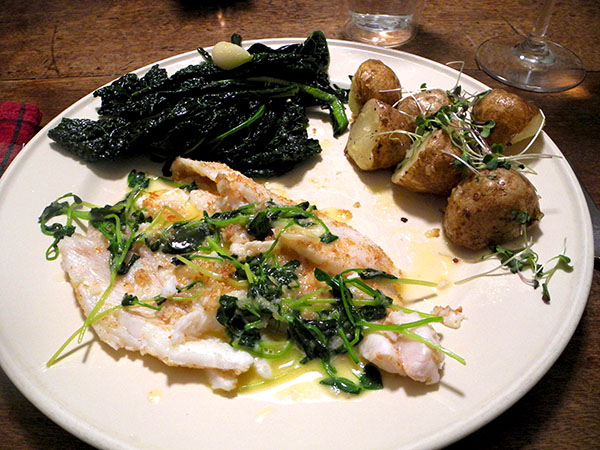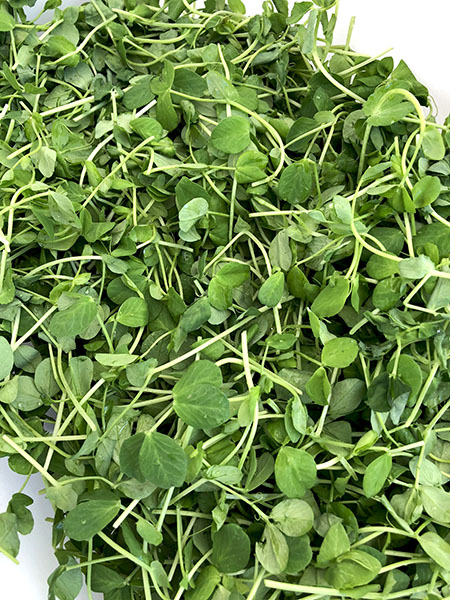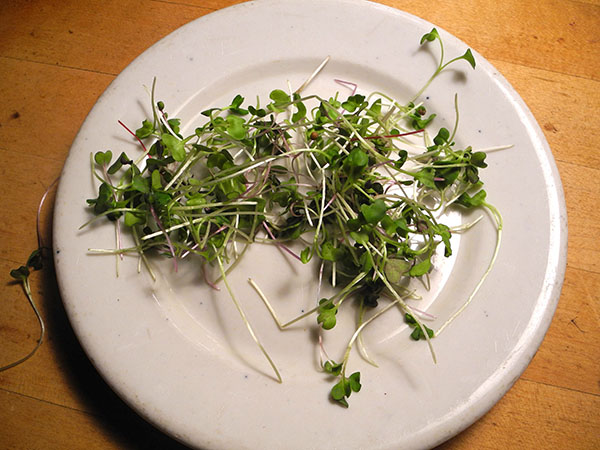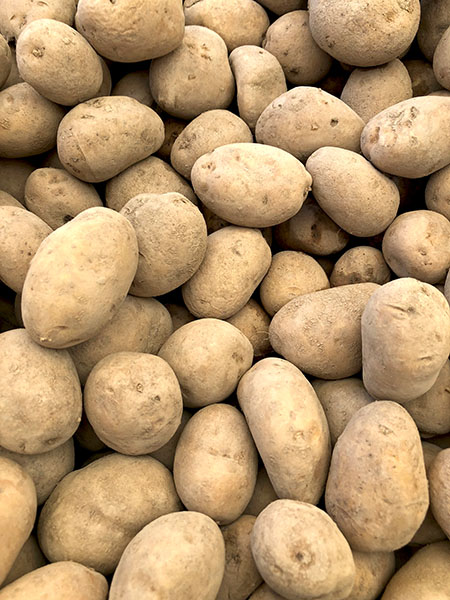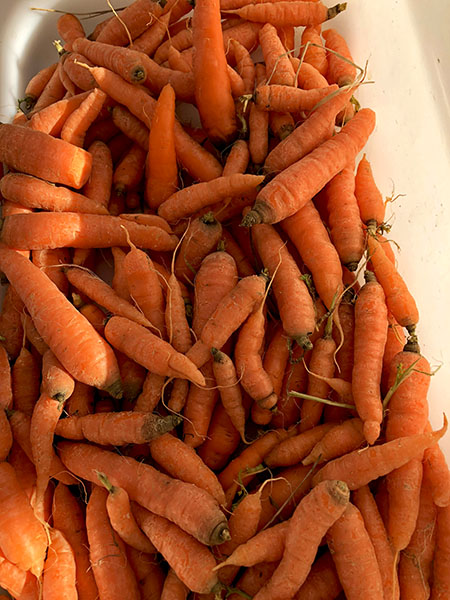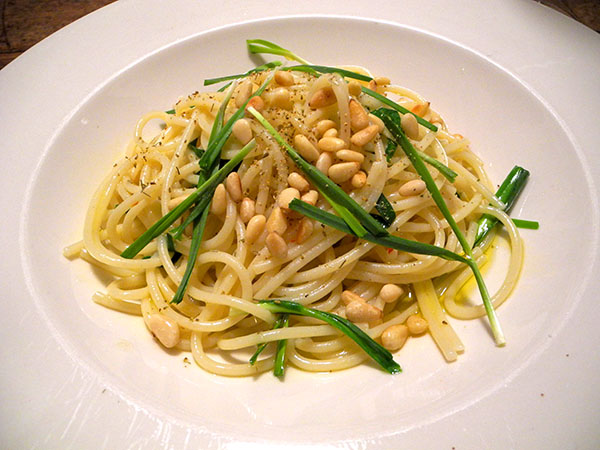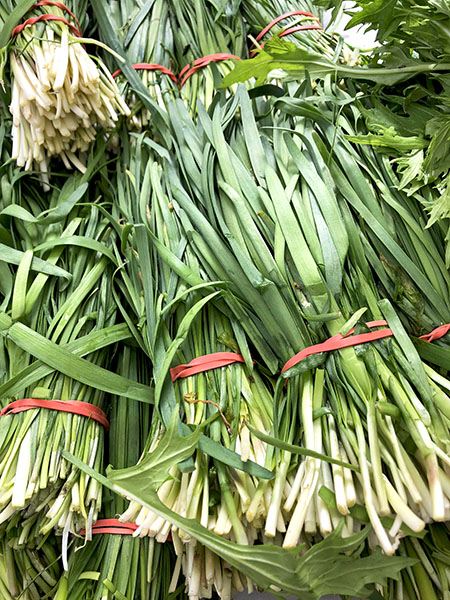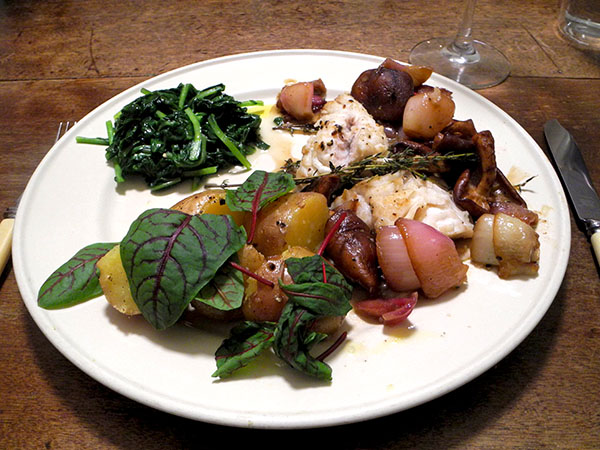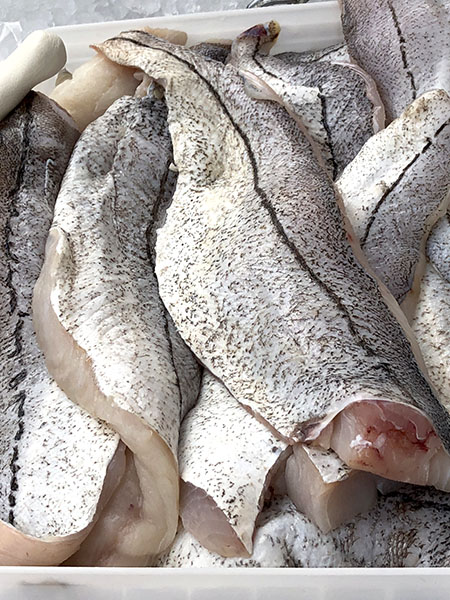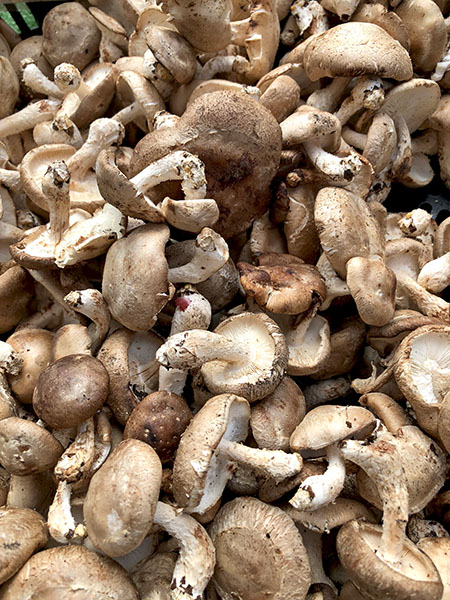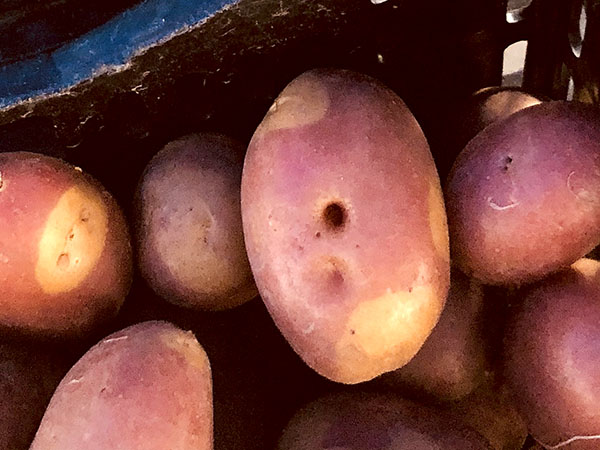
It was a terrific meal, not least because Barry is healing, wine has returned to the table as customary as before, we were able to relax throughout, and well beyond.
- *one fourteen and a half-ounce duck breast from Hudson River Duck Farm, the fatty side scored in tight cross hatching with a very sharp knife, the entire breast then rubbed, top and bottom, with a mixture of sea salt, freshly-ground black pepper, and a little turbinado sugar, left standing on the counter for about 45 minutes before it was pan-fried, fatty side down first, inside a small oval enameled cast iron pan over medium heat for a total of 8 or 9 minutes, turning once, draining the oil after the first few minutes [the fat to be strained and used in cooking later, if desired], removed when medium rare (cut into 2 portions to check that the center was of the right doneness, which means no more than medium rare), left to sit for several minutes before finished with a drizzle of the juice of an organic lemon from Whole Foods Market, garnished with snipped garlic chives from John D. Madura Farm and finished with a drizzle of olive oil
- *four ripe Backyard Farms Maine ‘cocktail tomatoes’ from Whole Foods Market, halved, placed cut side down inside the pan as the duck breast was finishing cooking, seasoned with sea salt and freshly-ground black pepper
- *one pound of Japanese sweet potatoes from Samascott Orchards, unpeeled, but washed thoroughly, cut as french fries, tossed inside a bowl with olive oil, sea salt, freshly-ground black pepper, and a pinch of crushed dark dried habanada pepper, than roasted just above 400º in my trusty well-seasoned Pampered Chef unglazed ceramic oven pan for about 35 minutes, or until crispy on the outside, soft on the inside, and chewy on the edges, sprinkled with a bit of a Spanish dulce paprika, and garnished with micro buckwheat cress from Windfall Farms
- *the wine was a California (Los Carneros) red, Sin Fronteras Los Primos Red Wine California 2016, from Naked Wines
- the music was the Spanish composer Emilio Arrieta’s 1850 ‘La Conquista Di Granata’, an opera commissioned by Queen Isabella II to honor her by association with Isabella I and the final conquest of the Spanish christians over the Moorish infidel some 350 years earlier (the music is beautiful, somewhat ‘Verdian’, but apparently it’s best to ignore the racist libretto), Jesús López Cobos, whose death last Friday we had heard about only today, conducting the Chorus and Orchestra of the Madrid Symphony
